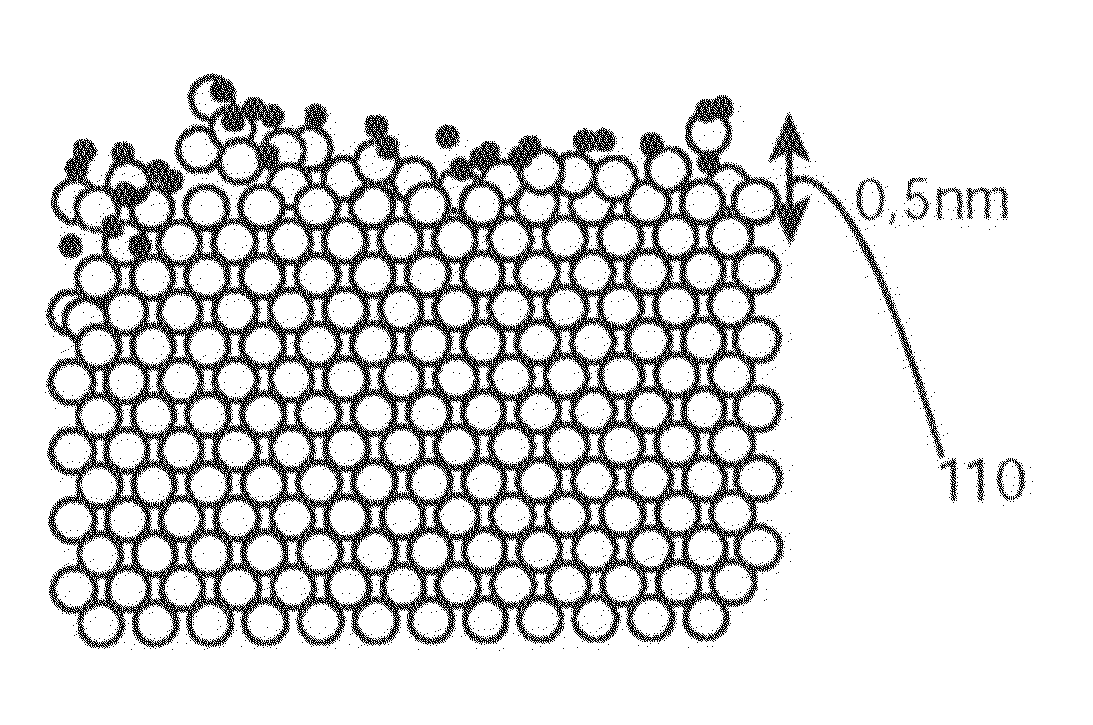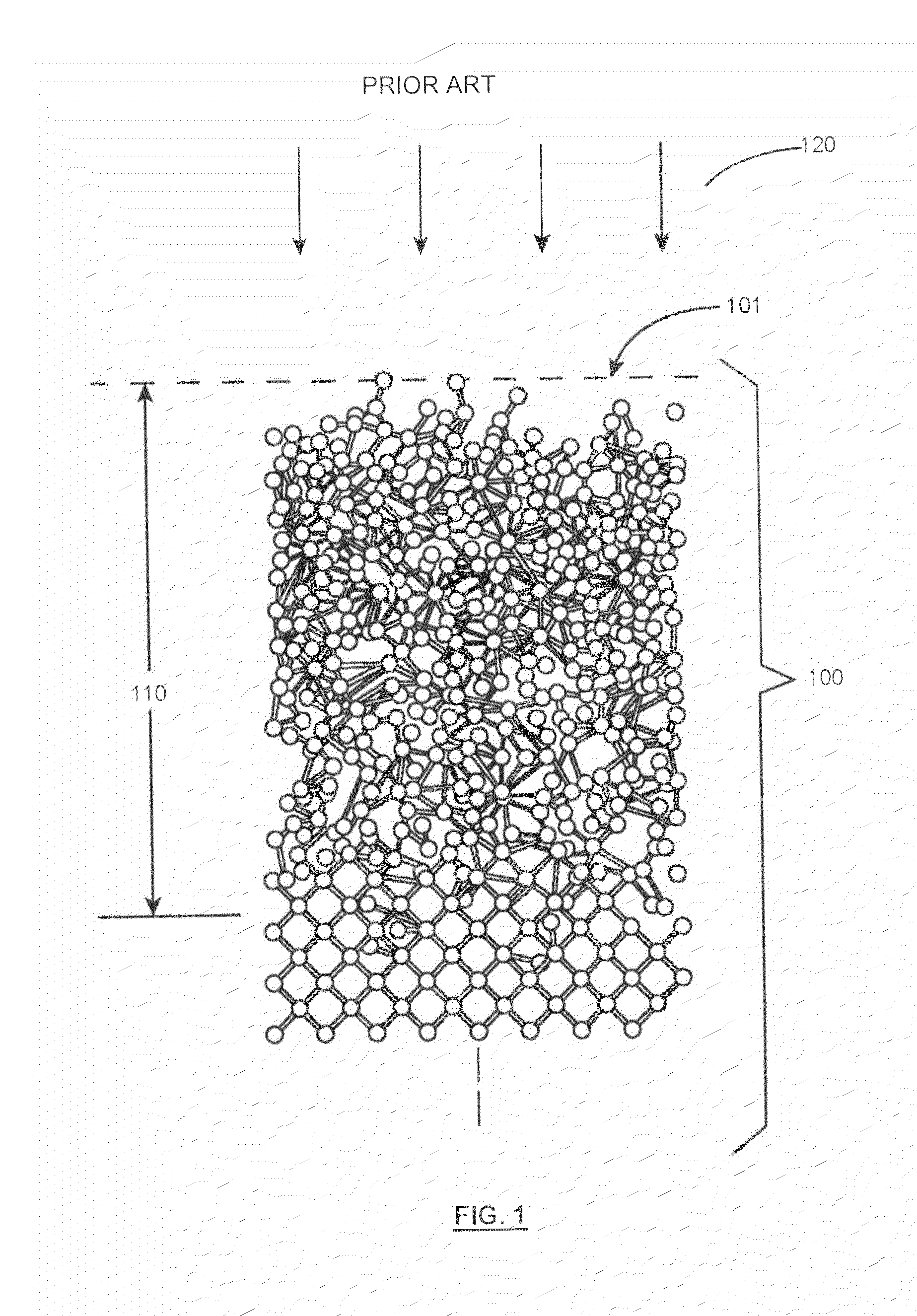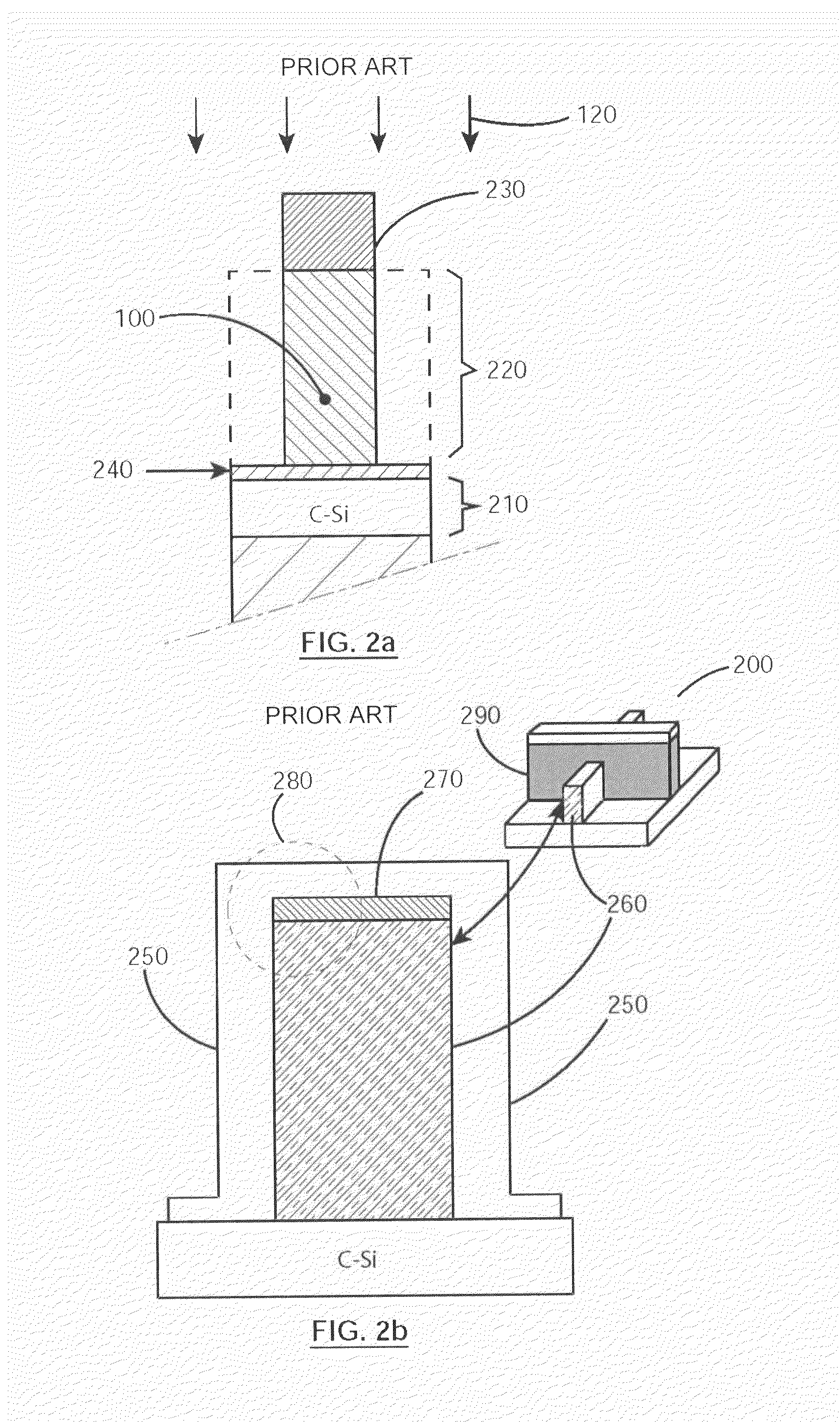Plasma etching process
a technology of etching process and plasma, which is applied in the direction of basic electric elements, semiconductor/solid-state device manufacturing, electric devices, etc., can solve the problem of the intrinsic etching precision which can be obtained from plasma, the gate electrodes of fdsoi transistors are particularly delicate, and the etching b>120/b> of fdsoi transistors can be etched with precision. improve the effect of accuracy control of the reactive layer thickness and
- Summary
- Abstract
- Description
- Claims
- Application Information
AI Technical Summary
Benefits of technology
Problems solved by technology
Method used
Image
Examples
Embodiment Construction
[0095]It should be noted that, within the scope of the present invention, the words “on”, “over” or “underlying” or the equivalents thereof do not necessarily mean “in contact with”. Thus, for instance, depositing a first layer on a second layer does not necessarily mean that the two layers are directly in contact with each other, but this means that the first layer at least partially covers the second layer by being either directly in contact therewith or by being separated therefrom by another layer or another element.
[0096]In the following description, thickness is generally measured in directions perpendicular to the plane of the lower face of the layer to be etched or of a substrate whereon the lower layer has been deposited. Thickness is thus generally measured along a vertical direction in the figures shown. On the contrary, the thickness of a layer covering a flank of a pattern is measured along a direction perpendicular to such flank.
[0097]The invention will now be describe...
PUM
| Property | Measurement | Unit |
|---|---|---|
| thickness | aaaaa | aaaaa |
| thickness | aaaaa | aaaaa |
| energy | aaaaa | aaaaa |
Abstract
Description
Claims
Application Information
 Login to View More
Login to View More - R&D
- Intellectual Property
- Life Sciences
- Materials
- Tech Scout
- Unparalleled Data Quality
- Higher Quality Content
- 60% Fewer Hallucinations
Browse by: Latest US Patents, China's latest patents, Technical Efficacy Thesaurus, Application Domain, Technology Topic, Popular Technical Reports.
© 2025 PatSnap. All rights reserved.Legal|Privacy policy|Modern Slavery Act Transparency Statement|Sitemap|About US| Contact US: help@patsnap.com



